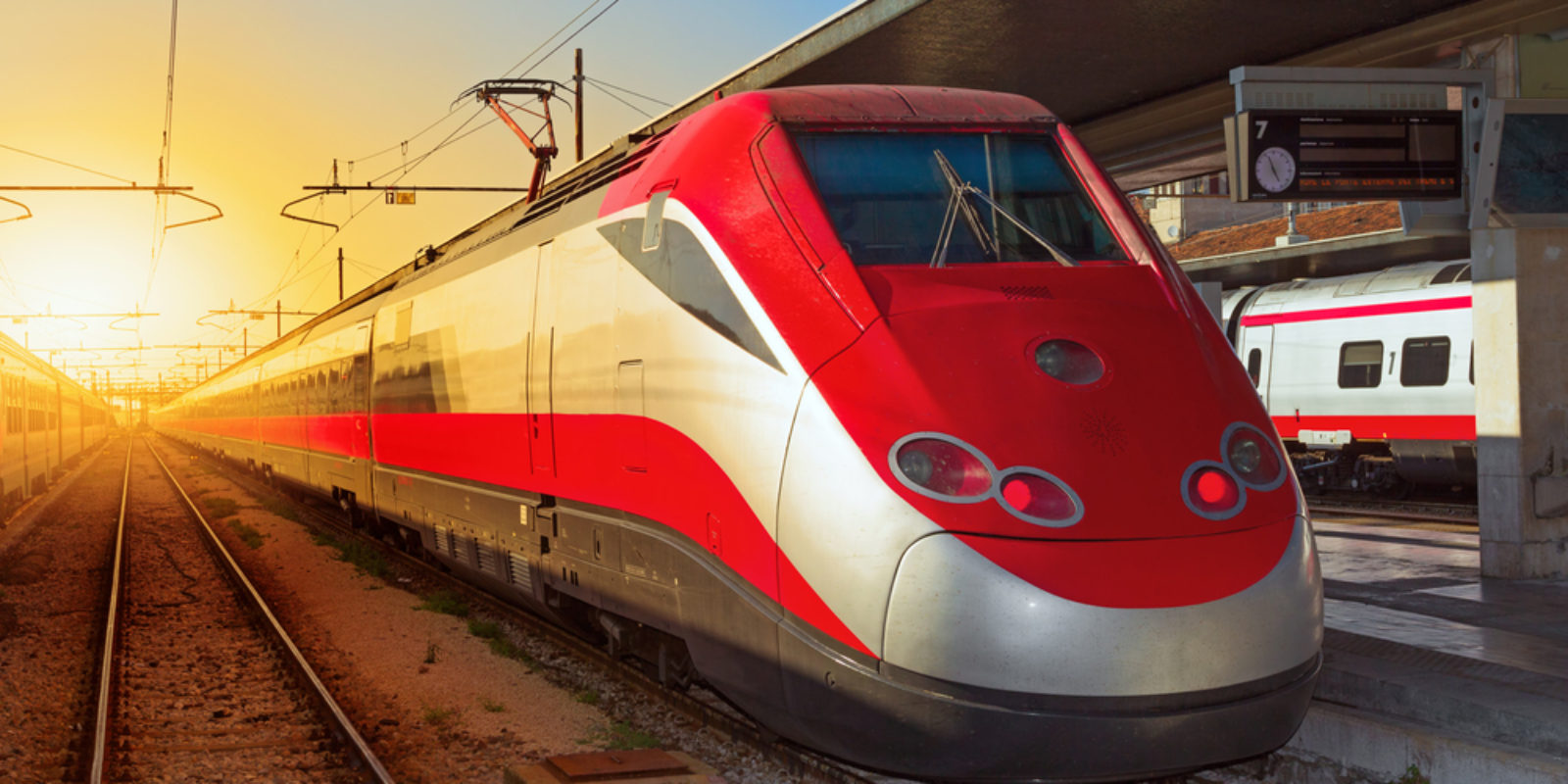Recently, I got a question about the Italian train system. Can travellers buy tickets on the day they want to travel, Hannah wants to know, and what are the advantages to booking in advance? What are Italian trains like? As a travel advisor, I am constantly on the move. Italy is one of my favourite countries, and I love to ride the rails between Rome, Florence and Pisa. When I’m traveling alone, I rely a lot on public transportation rather than shelling out big bucks for private transfers. I think it really helps me get a feel for the city or country, and its often cheaper and faster than flying between two places. If you don’t speak the language, though, using international train systems can be daunting. *This post originally appeared on Point Me To The Plane, a travel points and miles blog I write for.*

Question – Is it easy to buy tickets for Italian trains on the day you want to travel?

Hi Sarah,
I read your post about Florence, Italy with great interest! My sister and I are planning to travel from Rome to Florence and to Venice next summer. She wants to get our travel plans organised in advance, whereas I think we can wait to purchase train tickets once we are there. Should we book in advance, or will we be able to secure tickets on the day we want to travel? What’s the Italian train system like?
Thanks, Hannah
Answer – Yes, Italian Trains Are Very Easy to Use, But Remember to Validate
Hi Hannah, thanks for your question, and have a great time in Italy! Because you’re going to three of the most populated and popular cities in Italy, you shouldn’t have any problems purchasing train tickets on the day you want to travel. On any given day, there are at least 50 trains between Rome and Florence, and over 45 between Florence and Venice.

You do have a few options when it comes to the Italian trains. First, there are the regionale and InterCity trains. These are older, slower and take about four to six hours to travel between Rome and Florence.
The Frecce high speed trains, by contrast, take only an hour and a half. Most trains are operated by Trenitalia, however there is a private company – Italo – that offers trains on the same routes. You cannot book these on the Trenitalia website. See below for more details on buying Italo and Trenitalia train tickets.

There are several different classes of Frecce high-speed trains. Frecciarossa is the fastest, and links the major cities (Naples, Rome, Florence, Venice, Milan). Frecciargento and Frecciabianca both link medium to small cities.
Italo trains are similar to Frecciarossa trains, as they both travel at around 350 kmh (about 200 mph) and link larger cities.
Checking Train Schedules In Italy
First, you need to decide which train you want to take. You can check schedules on the Trenitalia website. Just input your starting point, destination and travel date(s). The results will indicate travel time as well as what type of train it is. Be sure to type the Italian name of the city, otherwise nothing will appear in the dropdown box for cities!
To check Italo schedules, simply go to the Italo website and do the same thing.
If you are near the station and wish to check in person, the kiosks offer the same capabilities as the online platforms. Here, you can purchase tickets for a future date (say, the following day).
Buying Train Tickets in Italy

There are several ways to purchase train tickets.
The first is to utilize the ticket machines in the station. Look for the Trenitalia kiosks (seen above), as this is where you can purchase Frecce tickets, as well as regionale and InterCity.
There are separate kiosks for Italo trains (as seen below), so make sure you go to the right one.
These kiosks allow you to select a language other than Italian, input your destination and travel date, choose a ticket type, and pay. They are often faster than using the ticket counter lines, which can be long. However, if you don’t have the right credit card or currency to use the machines, you may have to stand in line.

On the longer, high speed Italian trains, seat reservations are mandatory. This applies to the Frecce trains as well as the Eurostar and Italo lines. Seat reservations are also mandatory on InterCity trains, which are slower than the Frecce trains, but still service the long-distance routes.
When you book, the price of the train ticket includes the seat and the booking fee. At the kiosks, you can select aisle/window and the ticket will print out with a seat. At the ticket counter, the agent will simply assign you a seat unless you make a specific request.

So, when should you purchase tickets? If you’re just jumping on a Frecciarossa train between Rome and Florence, you can do it as early as 60 days out. But you can also show up at the station and purchase a ticket for the next train. In peak season (summer), you should plan to book at least one day in advance. In the past, I’ve stopped by Roma Termini and purchased my ticket to Florence for the following day with no problems.
There are advantages to purchasing your long-distance tickets well in advance, though, often savings of €10 ($12) or more. If you are set in your schedule (hotels and tours booked) then buying online in advance and printing out the ticket before you leave home isn’t a bad idea. If you travel a little more freely, and plan to “wing it,” then you might want to wait to purchase tickets.
When Can I Buy A Ticket And Jump On Any Train?
So, when can you purchase a ticket and simply get on the next train? When the trains are regionale trains, is the short answer. For instance, if you are in Florence and would like to visit Pisa, you can go to the station, buy a ticket, and take the next train that will get you to Pisa – even if you must change somewhere. Regional trains don’t require (or even accept, sometimes) seat reservations, but that also means it may be standing room only!
Basically, it boils down to this: All Italian trains require a ticket (un biglietto). Some Italian trains require both a ticket and a reservation (una prenotazione). No Italian trains require ONLY a reservation – you must have a ticket.
Important! Validating Train Tickets in Italy

After you purchase the ticket, and before you board the train, you need to validate the ticket. This only applies to train tickets that do not have a specific time and date for travel, like tickets purchased at a kiosk prior to traveling between Florence and Pisa (regionale trains).
To validate, simply insert the end of your ticket into the grey/green machines located near the platforms. It stamps the time and date on your ticket.

If you do not validate your ticket, it can result in serious fines. Train staff walk through to check tickets, so make sure you keep your validated ticket in an easy to reach place.
Train Passes in Italy
Some travellers purchase train passes, like the Eurail pass, for train travel. However, if you’re just traveling within one country, these are often not worth the price. Those with a pass that includes Italy can use the pass to travel most routes, but will still need to make a reservation and book a seat on all of Le Frecce trains, which costs money. Eurail pass holders cannot just show up and jump on the train.
To make a reservation, you can do so either on the Eurail website, the Trenitalia website or at the station. In the major cities, you can do this at the ticket counter or automated kiosk. At smaller stations, you can reserve a seat using the automated ticket machine. Seat reservations open up 60 days prior to travel dates. Since most travellers aren’t in Europe 60 days before their proposed train travel, another option is to reserve all your seats in advance with RailEurope. They add an $18 booking fee, however, and you must be able to receive tickets in the mail.
There are a LOT of different rules and regulations defined by each of the European countries that the Eurail passes cover, so it is worth doing your own research to decide if its worth purchasing.
**
Hannah, I hope that answers your question about Italian trains. Have a safe and enjoyable trip to Italy!
Do you have a burning travel question? Email it to travel@paperinkandpassports.com and keep an eye out for it in a future article! Questions may be edited for clarity or length.


